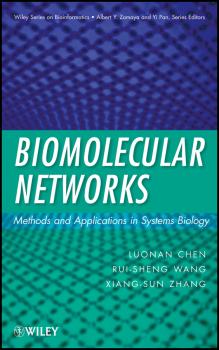ТОП просматриваемых книг сайта:
Luonan Chen
Список книг автора Luonan ChenАннотация
Alternative techniques and tools for analyzing biomolecular networks With the recent rapid advances in molecular biology, high-throughput experimental methods have resulted in enormous amounts of data that can be used to study biomolecular networks in living organisms. With this development has come recognition of the fact that a complicated living organism cannot be fully understood by merely analyzing individual components. Rather, it is the interactions of components or biomolecular networks that are ultimately responsible for an organism's form and function. This book addresses the important need for a new set of computational tools to reveal essential biological mechanisms from a systems biology approach. Readers will get comprehensive coverage of analyzing biomolecular networks in cellular systems based on available experimental data with an emphasis on the aspects of network, system, integration, and engineering. Each topic is treated in depth with specific biological problems and novel computational methods: GENE NETWORKS—Transcriptional regulation; reconstruction of gene regulatory networks; and inference of transcriptional regulatory networks PROTEIN INTERACTION NETWORKS—Prediction of protein-protein interactions; topological structure of biomolecular networks; alignment of biomolecular networks; and network-based prediction of protein function METABOLIC NETWORKS AND SIGNALING NETWORKS—Analysis, reconstruction, and applications of metabolic networks; modeling and inference of signaling networks; and other topics and new trends In addition to theoretical results and methods, many computational software tools are referenced and available from the authors' Web sites. Biomolecular Networks is an indispensable reference for researchers and graduate students in bioinformatics, computational biology, systems biology, computer science, and applied mathematics.

